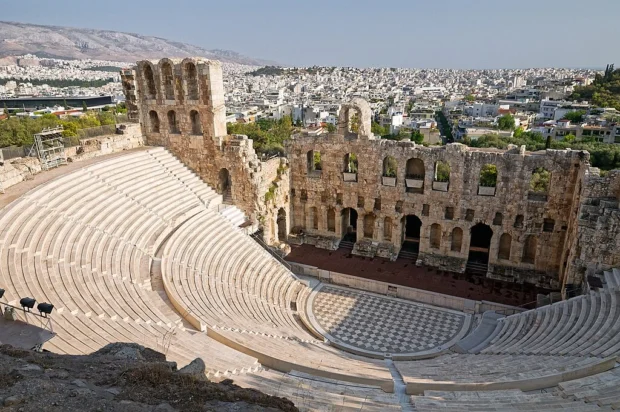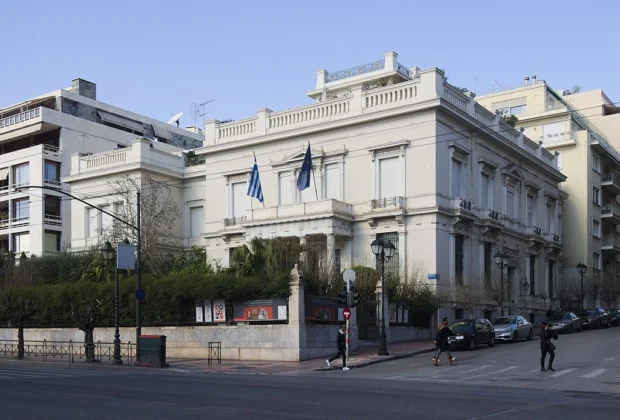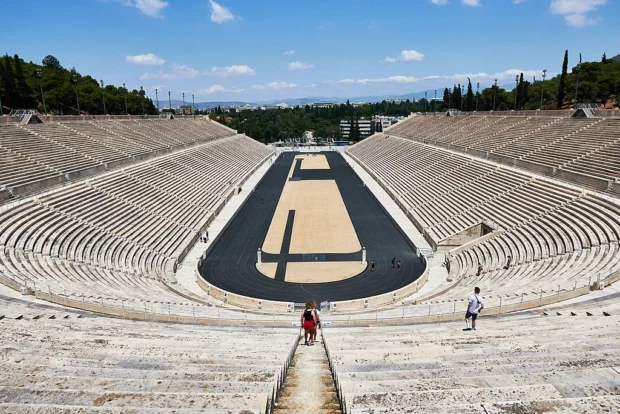Walking through Athens feels like stepping into a story woven across thousands of years. The city’s ancient stones and modern rhythms live side by side, inviting visitors to taste its proud heritage and lively present. Whether you wander under the shadow of the Acropolis or hear the chatter in bustling markets, Athens offers a rich blend of sights, tastes, and sounds that make it truly unforgettable. Let me take you on a stroll through streets full of history, culture, and unexpected delights.
Table of Contents

Ancient Athens That Still Speaks
No visit to Athens can ignore the Acropolis – that striking hill crowned by the Parthenon. Standing there early in the morning, before the crowds arrive, you can almost hear the whispers of ancient philosophers and artists. This temple was built to honor Athena, the city’s protector. Its tall columns and carved marble reliefs tell stories of gods, wars, and celebration.

Nearby, the Ancient Agora used to be the heart of public life. It was a marketplace, meeting spot, and political center all in one. Walking along its uneven stones, you notice how shops and stalls once formed a living network for trade and conversation. A little further, the Theater of Dionysus offers a look at where Greek drama first blossomed. Imagine the actors performing plays that shaped Western culture, right here.

One small, curious fact few tourists catch is the difference in stone color on the Parthenon-white marble mixed with pinkish shades. This shows the complex restoration work done to preserve it for future generations and reminds us how time and nature transform even the strongest monuments.

Magic in Markets and Quiet Corners
After feeling the weight of history, wandering into Athens’ markets brings you back to lively urban life. The central Varvakios Agora still pulses with traders shouting prices over fresh fish, spices, and vegetables. The air is full of scents: salty sea breeze mixing with herbs and roasting coffee beans. It feels like a living museum where tradition and daily life fuse.

Meander into Plaka, the old neighborhood nestled beneath the Acropolis. Cobblestone streets lined with tiny shops offer hand-painted ceramics, woven bags, and other crafts keeping Greek handiwork alive. The locals here take pride in their stories and often welcome curious visitors with warm smiles and friendly “Kalimera” greetings.

On quieter afternoons, I found myself at Anafiotika, a tiny cluster of whitewashed houses clinging to the hillsides like islands in a sea of civilization. It’s a secret pocket of Cycladic charm inside a big city-perfect for sitting at a small café and watching light play on the stones.

Taste Athens in Every Bite
Athens tastes as rich as it looks. Traditional tavernas scattered through districts like Monastiraki and Psiri serve dishes rooted in the Greek countryside and sea. Moussaka, that famous layered eggplant and meat dish, is a comforting staple, but don’t miss trying souvlaki-grilled meat wrapped in pita bread, topped with fresh tomato and tzatziki sauce.
To complement your Athens experience, the Grand Bazaar in Istanbul offers a fascinating glimpse into another vibrant historical market alive with crafts and culture.

For sweets, loukoumades-tiny fried dough balls soaked in honey and sprinkled with cinnamon-are a simple joy that perfectly captures Greek hospitality. I once chatted with a vendor who told me his family has been making these for generations, each batch a small family story.

Seafood lovers should head near Piraeus port, just a short ride away, where octopus and fresh fish are caught daily. Family-run fish tavernas here offer honest, fresh meals that many tourists miss by sticking only to the city center.

Getting Around Athens With Ease
Coming from the airport to downtown Athens is simple. A train connects the airport to the city center in about 40 minutes, offering a clean, quick way to avoid traffic. Once in town, the metro system is quite efficient for reaching major landmarks and neighborhoods without much walking uphill.

For neighborhoods the metro cannot reach, buses or trams fill in the gaps. Walking remains the best choice in historic districts, as narrow streets and lively squares lose their charm when zooming past by vehicle. Take your time-they are made for slow exploration.

Things to Know About Local Life
Greeks often express warm hospitality but appreciate respect for their customs. It’s common to greet with a handshake or a cheek kiss if invited. Avoid loud speaking in public places, which locals see as rude, and don’t expect shops to open very early or late-they usually work mid-morning to afternoon hours, especially on Sundays when many close.

When dining, it is polite to wait for everyone to be served before starting your meal. Sharing dishes is typical and enjoying food together is a social event, not just satisfying hunger. A Greek coffee offered to you is more than just a drink-it is an invitation to pause, chat, and connect.

Footnotes from the Past and Present
While the city’s ancient temples grab attention, Athens also reveals layers of later history. Byzantine churches with beautiful mosaics stand beside Ottoman-era mosques, reminding visitors of the city’s crossroads role between East and West. I remember visiting a small chapel whose walls still held faint frescoes that survived centuries of changes-a reminder that history is not just what we read but what time quietly protects.
If you want to explore more Greek islands with historic sites and unique local flavors, Rhodes offers a charming blend of medieval walls and seaside tastes.

One fascinating myth connected to Athens is that of the olive tree gift. Athena competed with Poseidon to name the city, and while Poseidon offered a saltwater spring, Athena’s olive tree gave food, oil, and wood. This story is everywhere-from the city’s name itself to the local cuisine where olive oil reigns supreme.
In quieter moments, I enjoyed sitting in outdoor cafés, hearing the mix of modern Greek and accents from around the world. Athenians seem to live with one foot in their deep past and another stepping into today’s busy Mediterranean life. It’s this blend that makes the city endlessly engaging.
Where to Stay for the Best City Feeling
If you want to breathe Athens fully, stay near the center, close to neighborhoods like Plaka or Monastiraki. This way, you wake up with views of the Acropolis and find cafés that open early for your first Greek coffee. Staying a little farther in areas like Koukaki offers a quieter atmosphere yet remains within walking distance of many historic sites.
Choosing accommodations near metro stations helps connect to other parts of the city quickly, especially when planning visits to museums or the coast. Apartments and small guesthouses here give a chance to live more like a local than a tourist, which might bring unexpected conversations or invitations to local festivals.
In Athens, every street and corner hums with stories, flavors, and moments waiting patiently for your discovery. Combining ancient heritage with the heartbeats of today’s people, the city asks only for curiosity and respect in return. Walking in Athens, you don’t just see history-you feel it happening right now.

Explorer of historical towns, ancient ruins, and traditional markets, combining modern travel with interest in heritage.
- From Temple of Olympian Zeus to Lycabetus Athens Greece by Jebulon on Wikimedia Commons – cc0
- Attica 06-13 Athens 50 View from Philopappos – Acropolis Hill by A.Savin on Wikimedia Commons – cc by-sa 3.0
- Lady sitting in front of Parthenon on Acropolis, Athens, Greece by Kristoffer Trolle on Wikimedia Commons – cc by 2.0
- Acropolis Museum Interior by Bandelmug on Wikimedia Commons – cc by 4.0
- Ancient Roman Agora (Athens) 20180221-2 by Suicasmo on Wikimedia Commons – cc by-sa 4.0
- Acropolis and Plaka district, Athens, Greece – panoramio by G Da on Wikimedia Commons – cc by-sa 3.0
- Temple of Olympian Zeus, Athens, Greece (13992895766) by Carole Raddato from FRANKFURT, Germany on Wikimedia Commons – cc by-sa 2.0
- SYRIZA party rally. Syntagma Square fountain on May 24, 2019 by George E. Koronaios on Wikimedia Commons – cc by-sa 4.0
- Building of the National Archaeological Museum of Athens (DSC 6212) by Antonis Giakoumakis on Wikimedia Commons – cc by-sa 4.0
- Athens with Mount Lycabettus and the Stoa of Attalus from the Areopagus on August 5, 2019 by George E. Koronaios on Wikimedia Commons – cc by-sa 4.0
- Ancient Roman Agora of Athens, April 2022 – 13 by TimeTravelRome on Wikimedia Commons – cc by 2.0
- Athens, Library of Hadrian by Palickap on Wikimedia Commons – cc by-sa 4.0
- Athens Kerameikos 01 by Ad Meskens You are free to use this picture for any purpose as long as you credit its author, Ad Meskens. Example: © Ad Meskens / Wikimedia Commons If you use this work outside of the Wikimedia projects, a message or a copy is very much appreciated.This image is not in the public domain. A statement such as "From Wikimedia Commons" or similar is not by itself sufficient. If you do not provide clear attribution to the author you do not comply with the terms of the file's license and you may not use this file. If you are unable or unwilling to provide attribution you should contact Ad Meskens to negotiate a different license. on Wikimedia Commons – cc by-sa 4.0
- 2016-08-03 Greece, Athens, Odeon of Herodes Atticus DSC 9747 DxO 2 by Laurens R. Krol on Wikimedia Commons – cc by 4.0
- Μουσείο Μπενάκη 6690 by C messier on Wikimedia Commons – cc by-sa 4.0
- At the Panathenaic Stadium of Athens by George E. Koronaios on Wikimedia Commons – cc by-sa 4.0
